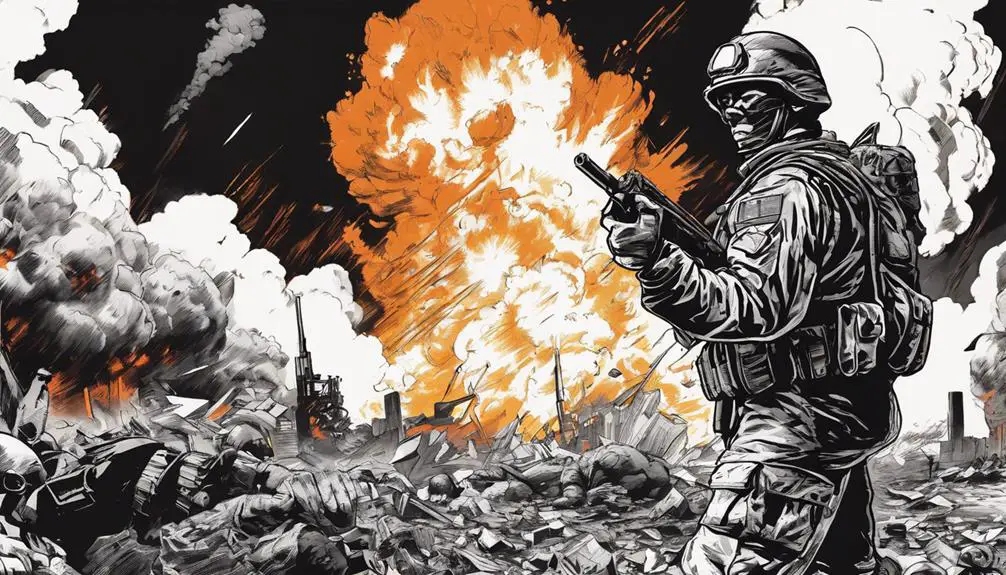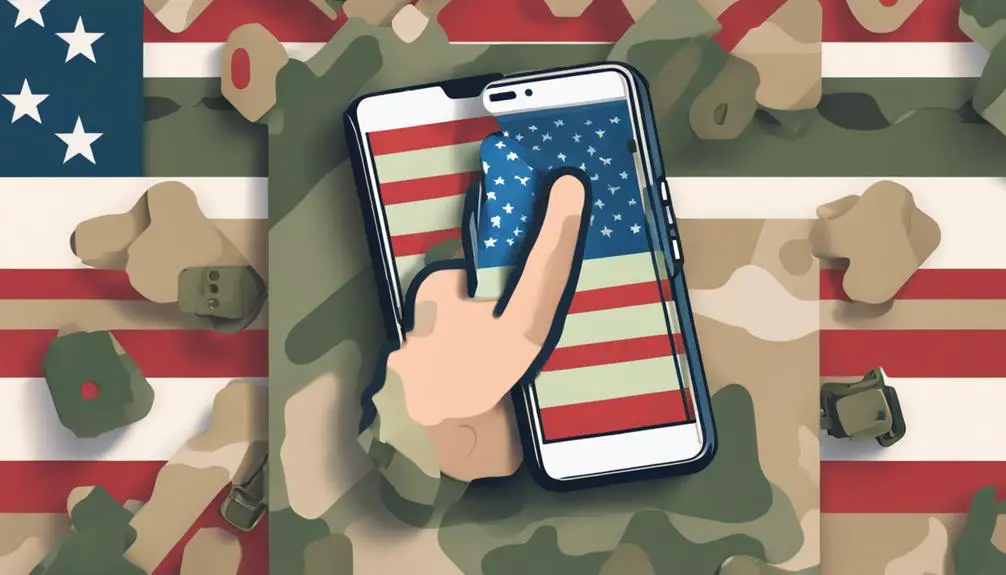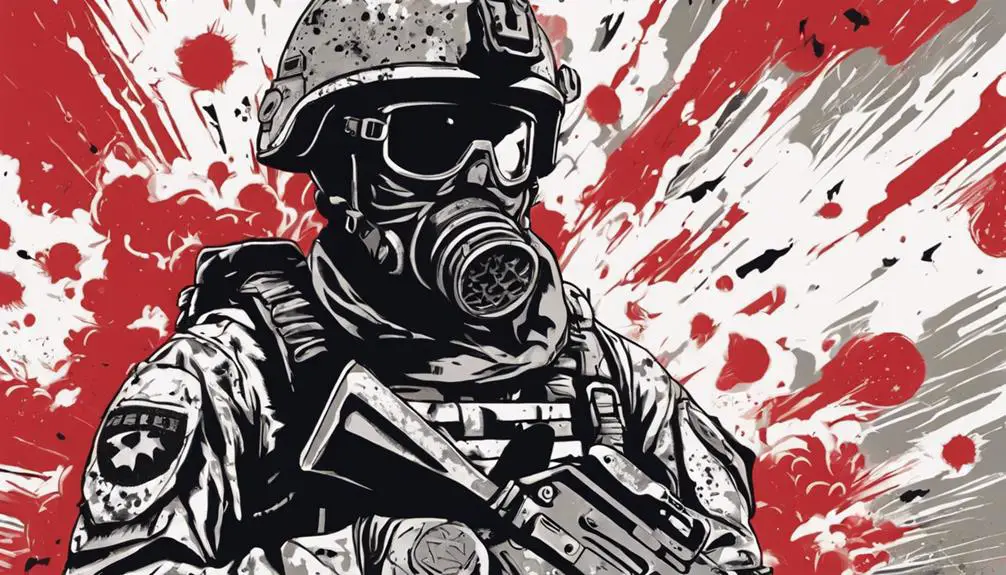You're about to uncover the fascinating world of military slang, where "Send It" means more than just a phrase – it's a clarion call to push beyond limits and seize initiative. Born from ancient warfare, military jargon has evolved to facilitate clear communication and camaraderie among soldiers. "Send It" emerged as a rallying cry post-9/11, symbolizing bravery and audacity. Today, it extends beyond battlefields, motivating people from all walks of life to overcome obstacles and achieve greatness. As you explore this phrase's origins, evolution, and cultural significance, get ready to uncover the secrets behind its power to inspire.
Origins of Military Jargon

You can trace the roots of military jargon back to the early days of warfare, when soldiers used slang to quickly communicate complex ideas on the battlefield. This linguistic evolution was born out of necessity, as clear and concise communication was critical in high-pressure situations. In the heat of battle, there wasn't time to explain complicated tactics or strategies; slang provided a shortcut to convey important information quickly.
Historical context plays a significant role in understanding the origins of military jargon. In ancient Greece and Rome, soldiers used colloquialisms to identify themselves as comrades-in-arms, distinguishing themselves from enemies. This practice continued through the Middle Ages, where knights and men-at-arms developed their own slang to communicate on the battlefield.
The use of slang also served as a way to create a sense of camaraderie and shared experience among soldiers. It was a way to signal that you were part of the group, that you were 'in the know.'
As warfare evolved, so did the language, adapting to new technologies, tactics, and environments. This unique blend of language and culture has come to define military communication, shaping the way soldiers interact and operate.
Evolution of Send It
As military slang adapted to new technologies and tactics, one phrase in particular – 'Send It' – emerged as a rallying cry, encapsulating the spirit of boldness and decisiveness that defined modern warfare.
You might wonder how this phrase evolved to become a cultural phenomenon.
In its evolution, 'Send It' gained cultural significance as it became synonymous with bravery, audacity, and a willingness to take risks. It's not hard to see why: in the heat of battle, 'Send It' was more than just a phrase – it was a battle cry that emboldened soldiers to push forward, even in the face of uncertainty.
Here are a few key factors that contributed to the evolution of 'Send It':
- Historical context: The post-9/11 era saw a significant shift in modern warfare, with an increased focus on special operations and asymmetrical warfare. 'Send It' emerged as a phrase that captured the essence of this new era.
- Technological advancements: The proliferation of communication technologies allowed 'Send It' to spread rapidly, becoming a ubiquitous phrase across different branches and units.
- Cultural resonance: 'Send It' tapped into a deep-seated desire for bold action and decisive leadership, resonating with soldiers and civilians alike.
Decoded: Send It in Action

In the chaos of modern battlefields, 'Send It' becomes a clarion call, urging soldiers to push beyond their limits and seize the initiative. You're in the thick of it, surrounded by the din of gunfire and explosions. Your team is pinned down, and the enemy is closing in. That's when you hear it: 'Send It!' It's a battle cry that electrifies the air, a call to action that galvanizes your unit into motion.
You know what it means: it's time to push forward, to take the fight to the enemy, and to secure the objective. In this high-stakes environment, 'Send It' has tactical applications that can mean the difference between victory and defeat. It's a phrase that's been etched into the lexicon of modern warfare, a phrase that's both a motivation and a mandate.
When you hear 'Send It!', you know it's time to put everything on the line, to leave it all on the battlefield. You'll push forward, guns blazing, as the enemy is driven back. In this intense, adrenaline-fueled moment, 'Send It' becomes more than just a phrase – it's a way of life.
Beyond the Battlefield
Beyond the chaos of the battlefield, the rallying cry of 'Send It' extends its influence, permeating everyday life with its motivational force. As you venture into the civilian world, you'll find that the phrase has seeped into the fabric of society, leaving an enduring mark on popular culture.
The cultural impact of 'Send It' is evident in the way it's used in everyday conversations, often as a phrase of encouragement or motivation.
You'll hear it in the language of entrepreneurs, athletes, and artists, all of whom use it to push themselves beyond their limits.
The civilian adaptation of 'Send It' is an illustration of its versatility, as it transcends its military roots to become a universal rallying cry for anyone looking to overcome obstacles or achieve greatness.
Send It in Modern Culture

Your social media feeds are flooded with #SendIt hashtags, as influencers and celebrities alike co-opt the phrase to promote their latest fitness regimens, product launches, and charity initiatives. It's hard to scroll through your feeds without stumbling upon a motivational post or a promotional ad with the 'Send It' tagline.
You might be wondering how a military phrase ended up in the midst of pop culture. The answer lies in social media's power to amplify trends and hashtags.
In today's digital age, social media platforms have become breeding grounds for viral phrases and memes. 'Send It' has become a rallying cry, symbolizing motivation, empowerment, and a call to action. You see it on Instagram, TikTok, and Twitter, often paired with dramatic before-and-after transformations, fitness challenges, or new product launches.
The phrase has transcended its military roots, evolving into a cultural phenomenon that resonates with the masses. As you navigate the world of social media, you can't help but notice how 'Send It' has become an integral part of the pop culture lexicon.
Frequently Asked Questions
Is Send It Exclusive to the US Military?
Throughout military history, phrases like 'send it' have been adopted as a cultural phenomenon, transcending military boundaries. While its origins might be rooted in military slang, its usage has spread beyond the military domain.
You'll find it in everyday conversations, social media, and even marketing campaigns. So, the answer is no, 'send it' isn't exclusive to the US military; it's a phrase that's been culturally adopted by the masses.
Can Civilians Use Send It in Informal Settings?
As you consider using 'send it' in informal settings, ask yourself: are you adopting a phrase that's not yours to claim? Cultural appropriation is a real concern, and using military slang without understanding its origins can be disrespectful.
Social norms dictate that we respect the cultural context of language. So, can civilians use 'send it'? Technically, yes, but be aware of the potential implications and consider the original meaning behind the phrase.
Is Send It a Formal Military Order or Colloquialism?
You're wondering if 'send it' is a formal military order or a colloquialism.
Let's consider a scenario: during a training exercise, a drill sergeant yells 'send it' to signal a tank crew to launch a mock attack. Within this scenario, 'send it' is an informal command, not a formal order.
This phrase exemplifies linguistic evolution in martial etiquette, where colloquialisms emerge to facilitate communication in high-pressure situations.
It's a phrase born from the need for brevity and clarity, not a formal military directive.
Can Send It Be Used in Formal Military Communications?
When communicating in formal military settings, you should avoid using colloquialisms like 'send it' in official protocols. In formal military communications, you must maintain a professional tone, adhering to established guidelines.
Using informal language can undermine the seriousness and credibility of your message. Stick to formal tone and language to guarantee your messages are clear, concise, and respected.
Is Send It Used in International Military Coalitions?
When dealing with international partners, coalition dynamics can get complex. You need to take into account cultural and linguistic nuances that vary from country to country.
Using 'send it' in formal communications might be unlikely, but it's not entirely impossible. International nuances dictate that clarity trumps slang, so it's still unlikely to appear in official documents, but you might hear it in casual conversations among coalition members.
Conclusion
You've reached the end of the 'send it' journey, and it's time to reap the rewards. Like a sniper locking onto a target, you've zeroed in on the essence of military slang.
'Send it' has evolved from a battle cry to a cultural phenomenon, and now it's your turn to deploy it in the wild. So, gear up, soldier, and get ready to send it into the fray, where language meets attitude and the results are explosive.







